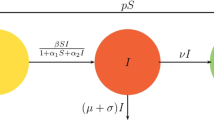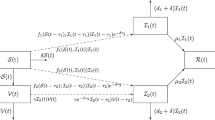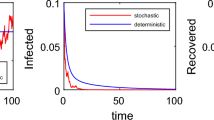Summary.
A detailed analysis of a scrapie outbreak in a flock of Cheviot sheep is described. A total of 33 cases of 1473 sheep born to the flock were reported between 1985 and 1994. The epidemiology of scrapie can only be understood with reference to sheep demography, the population genetics of susceptibility to scrapie, pathogenesis during a long incubation period, and the rate of transmission (by both horizontal and vertical routes), all of which interact in complex ways. In recent work a mathematical model incorporating these elements was developed and successfully reproduced key features of an earlier outbreak of scrapie in this flock. Here an application of the model to the second outbreak is described. The model accurately reproduces observed allele frequencies and total numbers of susceptible animals remaining at the end of the outbreak. A major difference between the two outbreaks is the very much lower force of infection in the second outbreak. This provided additional information which suggested two ways in which our existing assumptions be refined; firstly, older animals have reduced susceptibility to scrapie and secondly, homozygous and heterozygous susceptibles have different incubation periods.
Similar content being viewed by others
Author information
Authors and Affiliations
Additional information
Accepted October 24, 2000 Received May 3, 2000
Rights and permissions
About this article
Cite this article
Matthews, L., Coen, P., Foster, J. et al. Population dynamics of a scrapie outbreak. Arch. Virol. 146, 1173–1186 (2001). https://doi.org/10.1007/s007050170113
Issue Date:
DOI: https://doi.org/10.1007/s007050170113




